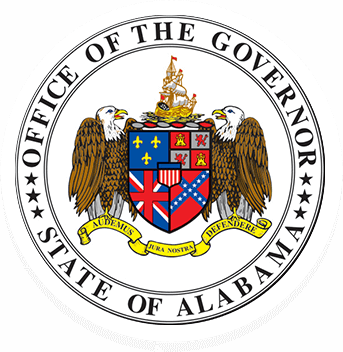Alabama First Class Pre-K Alumni Outperforming Peers According to New Study
MONTGOMERY – Students who voluntarily participated in Alabama’s high-quality First Class Pre-K program are more likely to be proficient in reading and math than their peers, according to a new study of Alabama third graders. This finding was especially true for minority children and children living in poverty.
“These findings prove that what we are doing in Alabama is working. Our First Class Pre-K program is second to none and our students are benefitting,” Governor Kay Ivey said. “Now we must work to take the methods of instruction in Pre-K and implement them into kindergarten, first, second and third grade classrooms. Success breeds success and a strong educational foundation is the basis for the success of all Alabamians in the future.”
The study, “Achievement Gap Closure and Gains Associated with Alabama’s First Class Pre-K,” was conducted by a research team that includes the University of Alabama at Birmingham and the Public Affairs Research Council of Alabama on behalf of the Alabama Department of Early Childhood Education.
“The latest analysis of the First Class Pre-K program provides the clearest evidence to-date that participation in Alabama’s high-quality, voluntary First Class Pre-K program is helping students succeed throughout their time in school,” said Jeana Ross, secretary of the Alabama Department of Early Childhood Education. “What is most exciting about this report is how the lessons learned in Alabama’s First Class Pre-K are persistent in every grade and in every race and ethnic group, with the most profound impact demonstrated by some of the state’s most vulnerable children.”
Among the study’s key findings, the research team observed that participation in Alabama’s First Class Pre-K program:
- Narrowed the gap in reading proficiency by 28 percent for all children in poverty; 32 percent for White children in poverty; 31 percent for Hispanic children in poverty; and, 26 percent for Black children in poverty.
- Narrowed the gap in math proficiency by 57 percent for all children in poverty; 71 percent for Hispanic children in poverty; and, 37 percent for Black children in poverty.
- Increased reading proficiency for children in poverty by 12 percent overall; 25 percent for Hispanic children in poverty; 23 percent for Black children in poverty; and, 3 percent for White children in poverty.
- Increased math proficiency for children in poverty by 13 percent overall; 17 percent for Hispanic children in poverty; 16 percent for Black children in poverty; and, 10 percent for White children in poverty.
There are currently 941 Alabama First Class Pre-K classrooms across the state. Classrooms are located in childcare centers, public schools, faith-based centers, college and university lab schools, private schools, community centers, military childcare centers, and other preschool facilities. The Alabama Department of Early Childhood Education administers the First Class Pre-K program through competitive grant applications, now being accepted through March 1.
For 11 years in a row, the National Institute for Early Education Research has named Alabama’s First Class Pre-K program the nation’s highest quality pre-k program for four-year-olds. Alabama’s program is one of only two states that meets or exceeds all ten of the benchmarks NIEER measures to determine program quality.
Pre-registration is now open for families interested in enrolling their four-year-olds in the First Class Pre-K program during the 2018-2019 school year. Due to the limited number of First Class Pre-K classrooms across the state, random drawings are used to select participants. The deadline to pre-register for the state’s random selection process varies by location. To register, applicants must complete the online form located at https://alprek.asapconnected.com.
###
Provided by the Office of the Governor of Alabama | governor.alabama.gov

